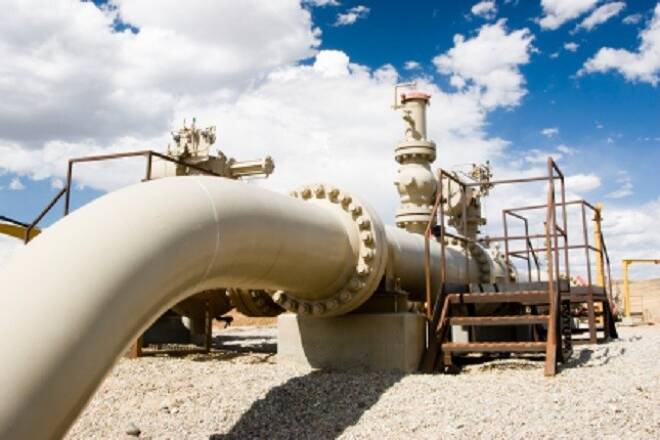Advertisement
Advertisement
Natural Gas Price Prediction – Inventories Declined Less than Expected but Prices Still Rebounded
By:
Natural gas prices rebounded on Friday, despite a smaller than expected draw in natural gas inventories. Prices bounced at support, rising 2.5%, even
Natural gas prices rebounded on Friday, despite a smaller than expected draw in natural gas inventories. Prices bounced at support, rising 2.5%, even though the weather is expected to be warmer than normal over the next 8-14 days according to NOAA. A stronger than expected payroll report could lead to a stronger economy increasing industrial demand and buoying natural gas prices.
Technical Analysis
Natural gas prices rebounded near support seen near a horizontal trend line that comes in near 2.90. Resistance is seen near a gap made in December near 3.15 and then the 10-day moving average at 3.68. Short term momentum is turning positive as the fast stochastic generated a crossover buy signal. The fast stochastic is printing a reading of 13, below the oversold trigger level of 20 which could foreshadow a correction. Momentum as reflected by the MACD (moving average convergence divergence) histogram is printing in the red with a downward sloping trajectory which points to lower prices.
The EIA Reported that Inventories Declined Less than Expected
The EIA reported on Friday that working gas in storage was 2,705 Bcf. This represents a net decrease of 20 Bcf from the previous week. Expectations were for a decline of 48 Bcf. Stocks were 450 Bcf less than last year at this time and 560 Bcf below the five-year average of 3,265 Bcf. At 2,705 Bcf, total working gas is below the five-year historical range. The 5-year average of prices is 3.07.
Jobs Surged More than Expected
The BLS reported that job creation grew more than expected in December as nonfarm payrolls roseby 312,000 in December though the unemployment rate rose to 3.9%. The reason the household survey moved higher was because the participation rate increased by 0.2% to 63.1%. The participation rate is now up 0.4% year over year. A broader measure of unemployment that includes discouraged workers and those holding part-time jobs called the U6 held steady at 7.6%.
About the Author
David Beckerauthor
David Becker focuses his attention on various consulting and portfolio management activities at Fortuity LLC, where he currently provides oversight for a multimillion-dollar portfolio consisting of commodities, debt, equities, real estate, and more.
Advertisement
